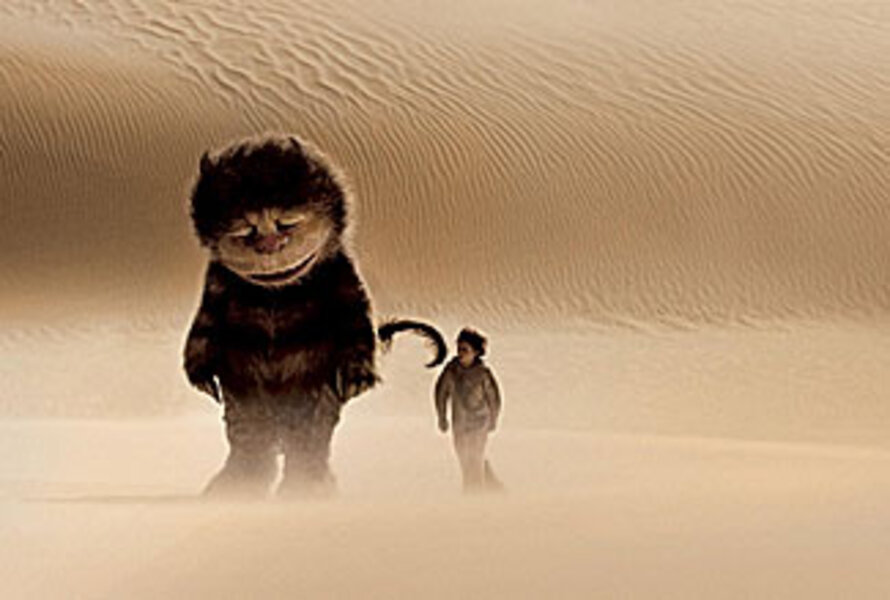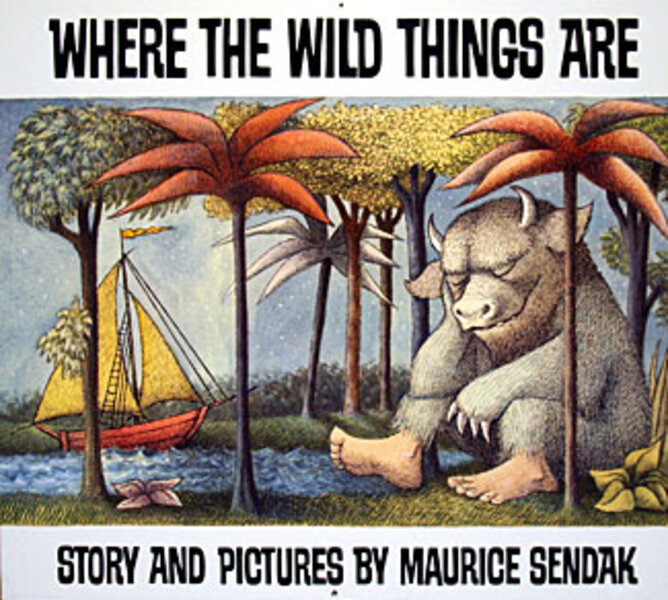Review: 'Where the Wild Things Are'
Loading...
Maurice Sendak's 1963 children's classic "Where the Wild Things Are" contains exactly 10 sentences – 338 words of text – and 18 pictures. Not exactly major movie material, you might say, except that a major moviemaker, Spike Jonze, almost pulls it off.
Judged strictly as a story, the long-awaited film that Jonze and coscreenwriter Dave Eggers have crafted lacks vroom and bite. Children, especially, love a good story, and, watching this mood piece movie, they may get antsy early.
But Jonze should not be judged by ordinary standards. He, is after all, the director of "Being John Malkovich," a movie-within-a-movie-within-a-conundrum, and "Adaptation," which was about the impossibility of concocting a coherent story line. (Both were written by Charlie Kaufman.) In "Where the Wild Things Are," Jonze is taking a large risk. Without benefit of a strong narrative, he is trying to capture the propulsive fascinations of childhood fantasies. (The great Japanese animator Hayao Miyazaki tries, more entrancingly, for the same thing.)
Nine-year-old Max (played by the marvelous Max Records) is a lively kid but lonely. His older sister has no time for him, and his single mom (Catherine Keener) is loving but harried. Standing atop the kitchen table at dinner time in his white wolf costume, Max announces, "Woman, feed me!" This is not a good way to go, and pretty soon a fight erupts that propels Max, still in his costume, onto the open sea in a skiff under a full moon. His unplanned destination: an island inhabited by 9-foot creatures – clawed, hairy Wild Things who like to bang around the forests knocking down everything in sight. Max somehow convinces them he's a king, their king, and thus conveniently avoids being eaten by them.
The creatures, brought to life through a combination of live action, puppetry, and CGI animation, speak like ordinary mortals. The contrast between their fearsome features and their homespun delivery is offputtingly comic. Jonze is emphasizing the ways in which these Wild Things are emanations of Max's equally wild id. The leader of the pack, Carol (voiced by James Gandolfini), is big and brawly on the outside but weak-willed on the inside. Judith (Catherine O'Hara) sports a large horn on her nose and always says exactly what she thinks. KW (Lauren Ambrose), Carol's estranged girlfriend, is the image of idealized motherhood. In one sequence she actually hides Max inside her tummy; he emerges covered in what looks like goopy amniotic fluid.
Jonze in this movie is attempting to merge the fantastical with the realistic, and his visual style, as in the shots of Max and Carol traipsing in long shot across caramel-colored desertscapes, is often minimalistic. He manages to make the Wild Things seem wholly believable. I never (well, almost never) thought to myself, "That big galumphing puppet sounds just like James Gandolfini."
This blend of the real and unreal is successful because Jonze's feeling for childhood binds everything together. Even when, particularly in the second half, the film lurches from vignette to vignette, I never wrote it off. There's too much poignancy to Max's plight. He is imagining (or is he?) a world totally unlike the one he has fled – a world he can control. And yet Max comes to realize that, in growing up, he can't control all the confusing, madcap emotions coursing through him.
It's a nice touch that the Wild Things, as we discover, don't entirely believe Max is a king. They want to believe it – which is almost the same thing. Max leaves the island chastened. Carol runs him down for being "just a boy," but when Max sails off, the Wild Things gather on the shore and, in a transcendent moment, raise their voices in a ceremonial howl.
I wish that Jonze had managed to transform's Max's odyssey into more than a collection of glittering shards. He underrates "traditional" storytelling; or maybe he's just not very good at it. But there are some great, rapturous moments in "Where the Wild Things Are." Jonze is humbled before the wonders of a child's imagination, and so are we. Grade: B+ (Rated PG for mild thematic elements, some adventure action, and brief language.)






